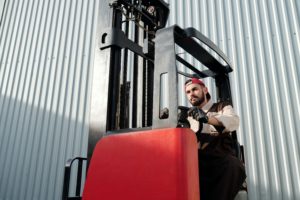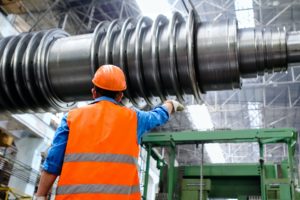
Material handling equipment stores, moves, controls or protects material as it goes through different processes in warehouses, plants, and other facilities. These are designed to carry large loads and improve production speed and safety.
Types of Material Handling Equipment
“Material handling equipment” is a broad term, and covers everything from the simplest shelf to complex, fully-automated systems. However, equipment generally falls under four general categories:
- Bulk material handling. Used to store loose powders or solids and transfer these to the next processing stage. Includes silos, hoppers, reclaimers, conveyor belts, stackers, and bucket and grain elevators.
- Engineered systems/automated systems. Removes the need for manual labor to significantly improve productivity, quality control, and plant safety. Includes automated storage and retrieval systems (AS/RS), automated guided vehicles (AGVs), robotic delivery stems, and conveyor systems.
- Industrial trucks. Used to stack, load, and transport materials. Includes hand trucks (also called dollies), side loaders, pallet trucks, and order pickers.
- Storage and handling. Stores and organizes materials. Includes bins and drawers, mezzanines, racks, and stacking frames.
While bulk material handling systems are made up of reliable machines, there are several problems that can still plague production.
Prevent Spillage with DAZIC
Spillage can stop production, waste materials, and lead to hours of difficult clean-up. It typically occurs at loading points if the upstream conveyor is too fast, or because of a steep incline that causes the material to slump back. Spillage can also occur at discharge points if the flow rate is too fast.
DAZIC zero speed switches can be attached on any material handling equipment that is part of a conveyor system or other shaft-driven process components. The switches stop operations when a machine slows down, stops, or deviates from standard operating parameters.
Barnes Concrete Co., Inc, a ready-mix concrete manufacturer, has used DAZIC to prevent spillage issues. Their feeders load 250 tons of gravel per hour; if any of that equipment failed, it would take three people at least three hours to shovel one ton of gravel. “It would be a nightmare if the DAZIC didn’t shut the conveyor belt down. I don’t even want to think about it,” said the plant supervisor.
Ensure Material Flow with AirSweep
Some materials have poor flow properties and have a tendency to block the discharge. Problems can occur if:
- The material is cohesive enough to form bridges and ratholes
- The material is a fine powder that behaves like liquid when aerated
- The material is prone to sifting segregation
- The material is hygroscopic and can cake or clump in humid plant environments
Flow properties must be considered when selecting the design of the material handling equipment. For example, hopper walls must be steep enough and should not generate too much friction, and the feeder should be able to discharge the material across the entire outlet cross section.
Material tests can determine the flow behaviors by measuring its cohesive strength, internal and wall friction, bulk density, and the gas permeability of fine powders. Ideally, the tests replicate the handling conditions such as temperature and humidity, moisture content, and time at rest.
Some vessels are pre-equipped with fluidizers to activate material. However, these are only effective for fine powders that respond to gentle aeration. It is more cost-effective to use a flow aid like AirSweep, which can activate even wet, sticky, or heavy materials.
AirSweep can be mounted on any vessel with simple tools, and installation can be completed within just a few days. Various companies have found AirSweep to be more effective than fluidizers, air cannons, and industrial vibrators.
Clear Dust and Powders with AcoustiClean
Materials like gypsum, flour, and sawdust are naturally dusty; processing methods, such as rough mechanical handling, can also create dust. This can affect worker safety since many materials can cause respiratory problems or even fatal lung disease after continuous exposure.
In some cases, dust or fine powders can affect the material handling equipment’s efficiency. The dust can affect heat transfer efficiency, and eventually cause it to clog and break down. This was the problem experienced by a US-engineered wood manufacturer, who had issues with soot accumulating in the boiler. Unfortunately, soot blowers warped in the furnace’s intense temperature.
The manufacturer replaced the soot blowers with AcoustiClean sonic horns, which produce high-energy, low-frequency sound vibrations that disperse dry material from material handling equipment. The cast-iron horns can withstand temperatures up to 2000ºF and require very little maintenance.
Customized Solutions for Every Process
Every process and material will have its own challenges. We work with you to understand your needs, and then customize a solution that can improve plant productivity, efficiency, and safety. Contact us to find out more about what AirSweep, Dazic, and AcoustiClean, and how they can be integrated into your process.






Comments are closed